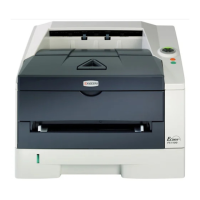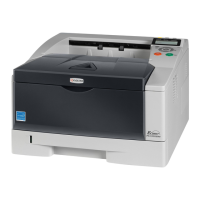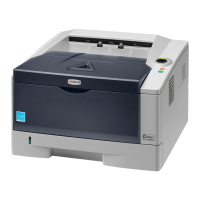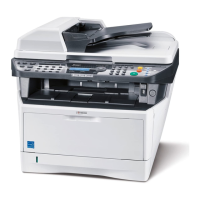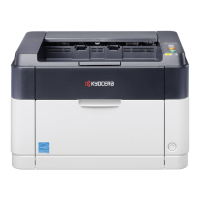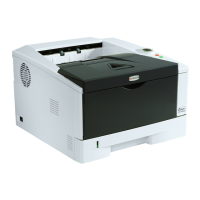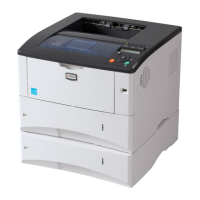2-8 Loading Paper
Some label paper is manufactured with an extra margin of top sheet
around the edge. Do not remove the extra top sheet from the carrier
sheet until after printing is finished.
The table below lists the specifications for adhesive label paper.
Postcards
One postcard can be loaded at a time. Make sure the postcards you are
going to set are not curled. Feeding curled postcards may cause paper
jams.
Some postcards have rough edges on the back (those are created when
the paper is cut). In this case, put the postcard on a flat place and rub the
edges with, for example, a ruler to smooth them.
Envelopes
One envelope can be loaded at a time. Envelopes should be fed in the
face-up position, right edge first.
Since the composition of an envelope is more complex than that of
ordinary paper, it is not always possible to ensure consistent printing
quality over the entire envelope surface.
Normally, envelopes have a diagonal grain direction. Refer to Paper
Grain on page 2-6. This direction can easily cause wrinkles and creases
when envelopes pass through the printer. Before purchasing envelopes,
make a test print to check whether the printer accepts the envelope.
• Do not use envelopes that have an encapsulated liquid adhesive.
• Avoid a long printing session for envelopes only. Extended envelope
printing can cause premature printer wear.
• To avoid jams caused by curled envelopes, stack no more than 10
printed envelopes on the output tray.
Item Specification
Weight of top sheet 44 to 74g/m² (12 to 20 lb/ream)
Composite weight 104 to 151g/m² (28 to 40 lb/ream)
Thickness of top sheet 0.086 to 0.107mm (3.9 to 4.2 mils)
Composite thickness 0.115 to 0.145mm (4.5 to 5.7 mils)
Moisture content 4 to 6% (composite)

